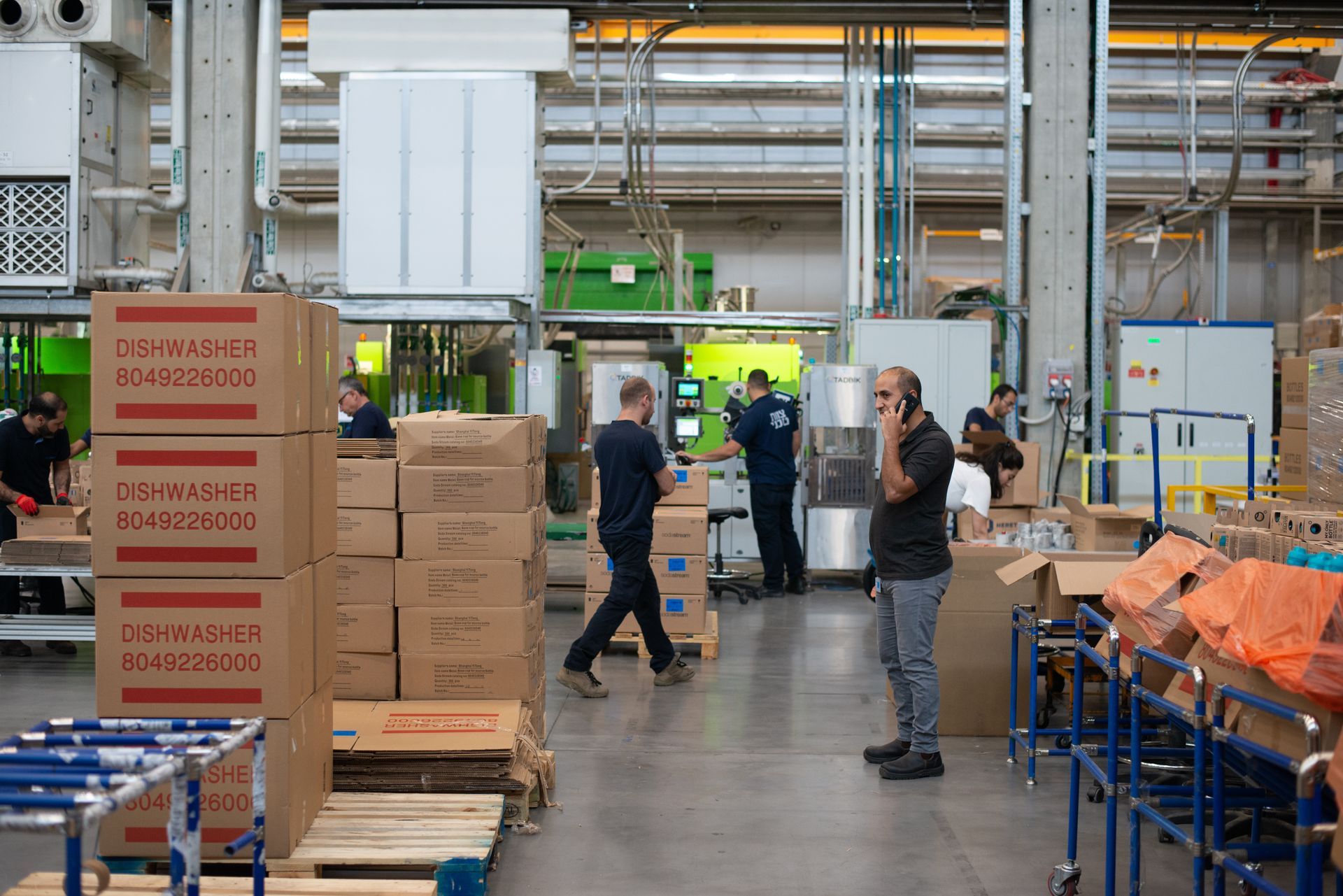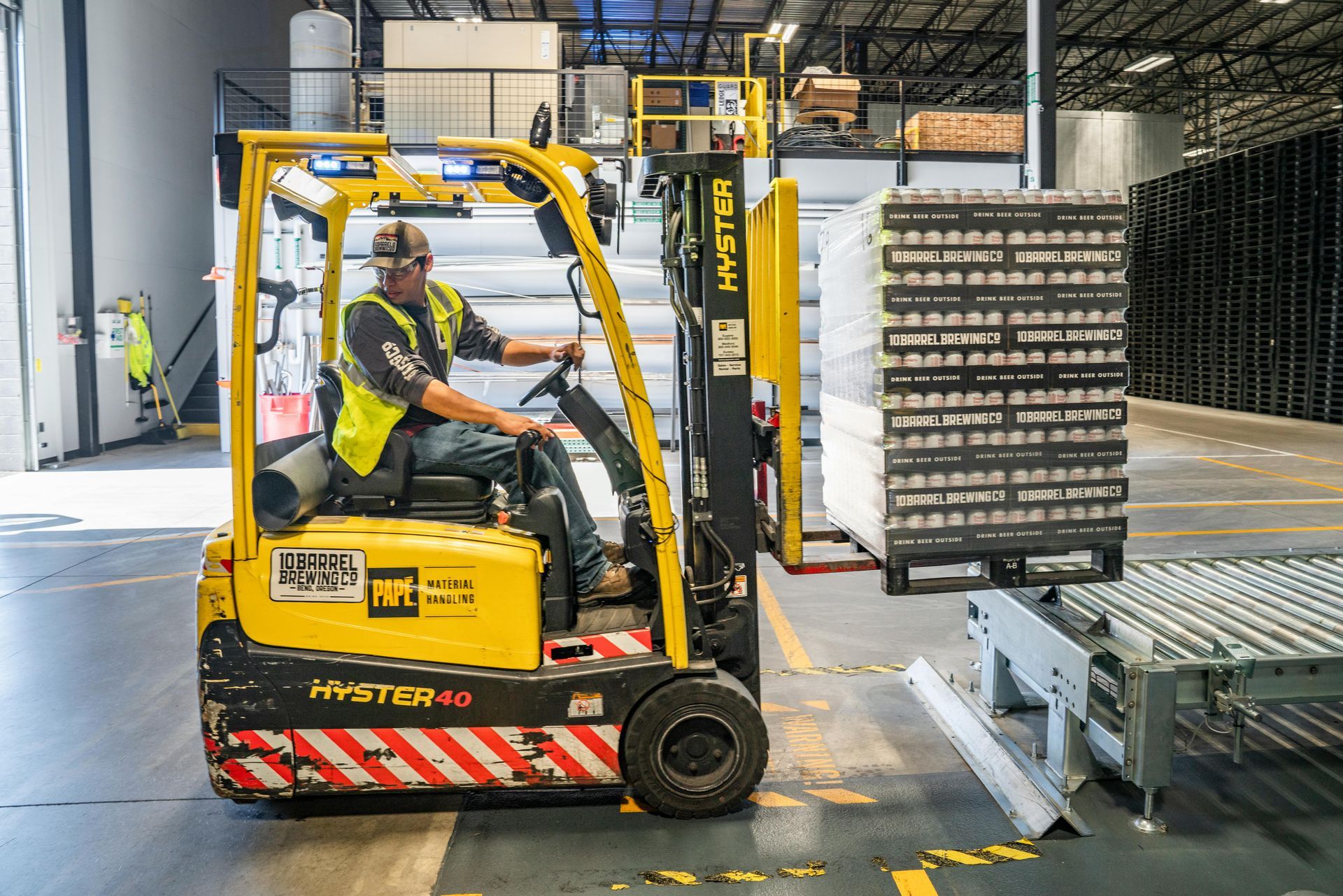Warehouse Safety Best Practices for Secure and Efficient Operations
The warehouse sector demands a strong focus on safety measures to not only protect employees but also ensure smooth and efficient operations. As the industry continues to grow and evolve with technological advancements, new challenges emerge that necessitate the implementation of robust and comprehensive safety protocols. Warehouse safety measures encompass a wide array of practices designed to minimize risks, reduce the frequency of accidents, and create a secure environment that fosters productivity and employee satisfaction. At Front Line All Temps, our specialization in the warehouse sector enables us to provide valuable insights and tailored staffing solutions to support businesses in building and maintaining a safe and efficient work environment.
As previously introduced, safety is paramount within the warehouse sector for both employee well-being and overall operational efficiency. Implementing appropriate safety measures not only minimizes accidents and injuries but also fosters a more productive work environment. In this blog article, we will explore several vital warehouse safety practices, focusing on Occupational Safety and Health Administration (OSHA) standards, hazard assessment, safety training, equipment safety, and warehouse organization. By adhering to these best practices, businesses can create a safer workplace and enhance overall performance within their facilities.
Comprehending and Applying OSHA Standards
Acquainting yourself with OSHA guidelines and regulations specific to the warehouse sector is critical for ensuring a safe work environment. OSHA supplies various resources and guidance to help businesses comply with safety standards and reduce risks within their facilities. Key areas to concentrate on include:
1. Hazard Communication: Develop a comprehensive hazard communication program, ensuring that employees understand the potential risks associated with chemicals or substances within the warehouse and can handle them with appropriate precautions.
2. Personal Protective Equipment (PPE): Provide employees with necessary PPE, such as safety glasses, gloves, and hearing protection, to minimize the risk of injury and ensure their safety during work hours.
3. Walking and Working Surfaces: Make sure all walking and working surfaces are clean, obstruction-free, and display appropriate signage to inform employees of potential hazards, such as slippery floors or uneven surfaces.
4. Ergonomics and Manual Material Handling: Teach employees proper lifting techniques and provide ergonomic tools and equipment to minimize the risk of injury due to manual material handling tasks.
Conducting Hazard Assessment and Managing Risk
Periodic hazard assessment and risk management are essential for maintaining a safe warehouse environment. Identifying potential risks allows businesses to take proactive steps to minimize accidents and injuries. Here are some core strategies for effective hazard assessment and risk management:
1. Perform Routine Safety Audits: Regularly conduct safety audits to evaluate warehouse facilities and pinpoint potential hazards. Rectify any risks with appropriate corrective actions, such as implementing new safety procedures or providing additional employee training.
2. Enforce Safety Policies and Procedures: Establish transparent safety policies and procedures to guide employee actions and ensure adherence to best practices. Regularly review and update these procedures as needed to address changing conditions or new hazards.
3. Monitor Incident Reports: Encourage employees to report any incidents or near-miss events and review these reports to identify patterns or areas where safety improvements may be necessary.
Empowering Employees Through Comprehensive Safety Training
Effective safety training is crucial for promoting a safety-first mindset among warehouse employees. Investing in all-encompassing and ongoing safety education can directly impact accident prevention and employee well-being. Consider these steps to enhance your safety training program:
1. Offer In-Depth Onboarding: Deliver comprehensive safety training to new employees during onboarding, tackling vital topics such as hazard identification, proper equipment usage, and emergency procedures.
2. Conduct Regular Refresher Training: Schedule refresher training sessions to ensure employees remain knowledgeable about safety practices and address emerging hazards within the warehouse.
3. Promote Employee Engagement: Encourage open communication and feedback from employees regarding safety concerns or potential improvements to the existing safety program.
Securing Material Handling Equipment Safety and Maintenance
Material handling equipment, such as forklifts, pallet jacks, and conveyor systems, plays a significant role in warehouse operations. Proper usage and maintenance of this equipment are crucial for maintaining a safe work environment. Consider these guidelines:
1. Provide Certification and Training: Verify that equipment operators receive appropriate certification and training to operate the machinery safely and efficiently.
2. Implement Equipment Inspection and Maintenance Procedures: Inspect and maintain equipment regularly, using a thorough checklist to spot and address potential issues before accidents happen.
3. Promote Equipment Awareness: Urge all warehouse employees to be aware of equipment movement and adhere to safety practices such as maintaining safe distances and using proper communication protocols.
Upholding a Clean and Organized Warehouse Space
A clean and organized warehouse contributes to a safer, more efficient work environment. Put the following housekeeping practices into action to maintain order and reduce potential hazards:
1. Regularly Clean Work Areas: Organize routine cleaning of aisles, storage areas, and workstations to keep surfaces clutter-free and decrease the risk of accidents.
2. Use Clear Signage and Labeling: Implement clear signage and labeling systems to guide traffic, spotlight hazards, and indicate designated storage areas for materials and equipment.
3. Optimize Space Utilization: Strategically arrange warehouse storage areas, workspaces, and aisles for maximum space efficiency, reducing congestion or potential accidents.
Conclusion
By following best practices in warehouse safety measures, businesses can foster a secure and productive work environment. Understanding and complying with OSHA standards, conducting hazard assessments, providing comprehensive safety training, ensuring material handling equipment safety, and maintaining an organized workspace are all vital components of an effective safety program. Partner with Front Line All Temps for tailored
staffing solutions and expertise in the warehouse sector, ensuring your business receives the support it needs to excel amid the challenges of the ever-evolving industry.










